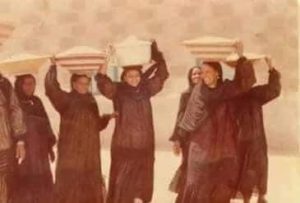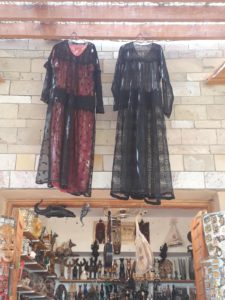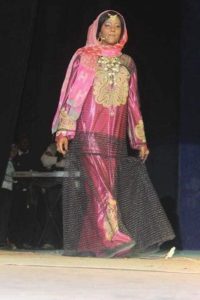Gergaar
Gergar is the traditional Nubian women’s dress worn by married women, young girls are not allowed to wear it, it is usually made from black fine transparent cloth called “Tull” with botanical, stars, and bird patterns also the most symbolic motif in Nubia the triangle which has a cultural meaning referring to ‘Hejaab” to protect individuals from the envy eye, the patterns are always in the same color of the fabric. The word Gergar comes from the old Nubian word (Ger-Go-Ar) which means “the transparent”, it is illustrated in the ancient Egyptian temples worn by Nubian queens, the most famous is Nefertari in Abu Simbel Temple. Historically, Gergar used to be a royal costume only for queens and princesses but it is transmitted through generations to be the traditional women’s costume in Nubia from all social classes, now it is indicative of the identity of the Nubian woman.
Nubian women wore Gergar over their colorful dresses, it is tall and even taller than the dress, and taller from behind makes a small tail, which is functional, as it erases the lady’s footprint from the sand so that nobody can trace or make magic for her. Gergar is loose and light to suit the hot weather in the south. Gergar has a number of folds, normally seven ties, from the waist so that the pregnant woman undo one every month of pregnancy to fit her body. Gergar is a costume of daily life and festive occasions and is not to be worn on mourning occasions. Gergar is a living heritage in Nubia despite the rapid social changes in the local communities due to acculturation.




